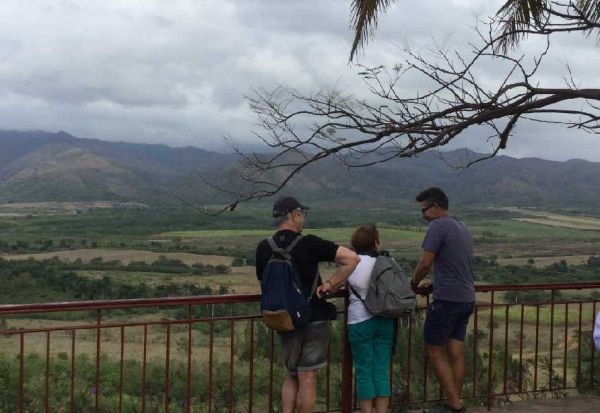
province of Sancti Spiritus. (Photo: José A. Rodríguez / Escambray).
The creation of more than fifty tourist routes, the agricultural revival of the plain, as well as the restoration of ranch houses and other buildings are the result of the comprehensive program for the rehabilitation of Trinidad’s Valley of the Sugar Mills, aimed at boosting heritage values in favor of the leisure industry and the improvement of local rural communities.
Reiner Rendón Fernández, delegate of the Ministry of Tourism (Mintur) in Sancti Spíritus, said that fifty three tourist routes have been so far designed which confirm the immense historical, cultural, social, and natural values of the valley.
According to historiographical sources, in 1827 the 56 sugar mills located in the area produced 640 000 tons of sugar, a record without antecedent anywhere else on earth.
The current Mintur-rulled rehabilitation program has prioritized agricultural development in the valley by encouraging cattle raising and the cultivation of miscellaneous crops, sugarcane and timber and fruit trees.
Rendón Fernández praised the program concieved for the restoration of ranch houses and highlighted what has been done in Guachinango, the only ranch house linked to livestock in the region. This facility was recently reopened to the tourism business.
For its part, the Office of the Conservator of the City of Trinidad and the Valley of the Sugar Mills is responsible for the restoration of several similar facilities like the Guaimaro and the San Isidro de los Destiladeros ranch houses. Together with the National Commission of Cultural Heritage, the Conservator’s Office safeguards the respect for historical and architectural values during the implementation of the different actions of the rehabilitation program.
The comprehensive development and restoration program, started in 2009, involves more than a dozen entities, institutions and organizations, including the agriculture and housing sectors as well as the Provincial Center for Cultural Heritage.
 Escambray ENGLISH EDITION
Escambray ENGLISH EDITION





Escambray reserves the right to publish comments.